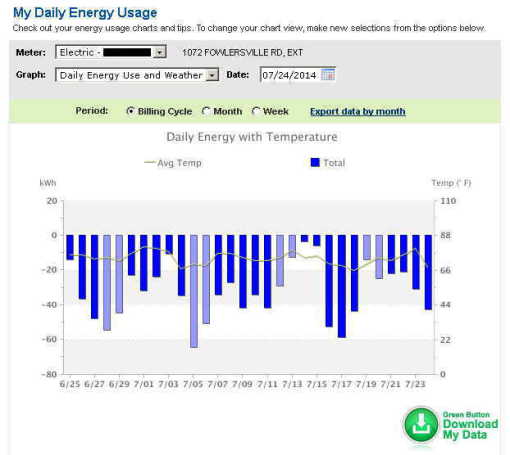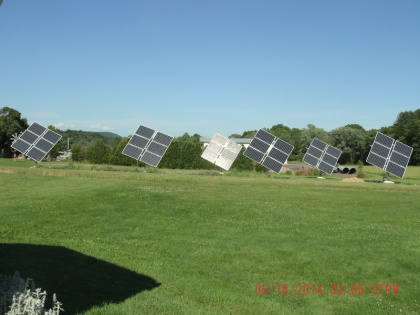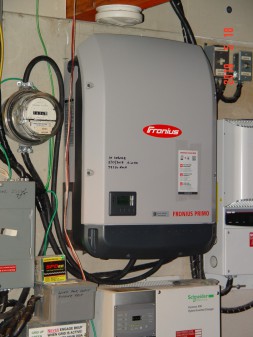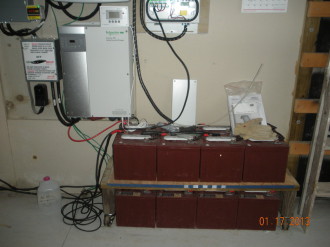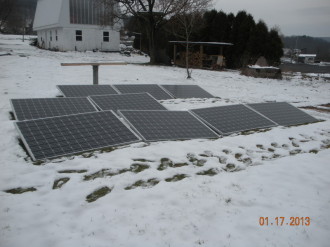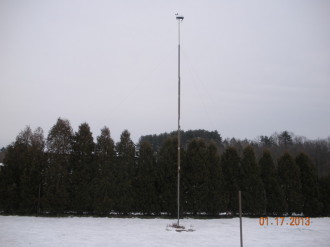Solar PV (See updates below)
9180 watts of PV is being installed. It will be in the form of 6 trackers with 6 - 255 watt panels mounted. The trackers are East/West tracking but are custom made by myself. They will not accomplish the East/West movement by rotation but by "tipping" from side to side much like polar sat tracking. The main grid tie inverter is a Sunnyboy 8000US with a Schneider Electric XW6048 Inverter/Charger for backup and off-grid operation. 16 Trojan T105's with 4 additional Power Battery gel/AGM added in parallel for a total of 32 KWH capacity. System is currently in development but expected to be completed by Spring.
System certified on 6/18/2014
As of 7/30/2014, last day we had a net use of power from the grid was 6/12/2014.
First three trackers active. Peak output so far, 4482W with a cloud edge. Best day was Sat at 36.5KWH. Now, three more to go...
Updated!!
All six trackers now active. Had a "cloud" pop that would have taken in 11 KW if the inverter could have handled it!! Best day at 50% production was 48KWH. Based on
that, I would expect my best day going forward to be reaching for 100KWH. Will not occur in Summer, too warm. Probably will happen in MArch aor April on a cold clear PSD. WIll post updated monthly
electric bill grapth soon.
9/1/2022!! This is the new Rolls Lead/Acid OPzV 46 KWH (C-100 rate) battery backup bank. 24 S2-690 2V batteries comprise the battery bank. It is fused at 300 amps. It is charged by the new Conext mppt 80 - 600 PV charge controller. This charge controller will be fed by a new 4.6KW East/West barn array consisting of 14 Sunpower Xseries 327W-335W panels. You can see the bottom of the controller has a tempoary black and red wire running into it from a ground test array of 8 panels. The OCV of the string is around 510. This is the main "power wall" and electrical work bench in the barn. It's a bit busy!!
The Xantrex 6048 inverter/charger has the ability to "sell" off excess power once the battery bank is a full charge. This is the 'Normal' state. The battery bank is only used in case of grid down situations and once a month 'top offs' for battery health. Used in this fashion, battery life is expected to last 20+ years. There is no maintenance like with FLA Lead/Acid batteries. Li technology was avoided due to cost at this time, though prices are falling. The battery cost was about $206 per KWH, plus the other equipment. The old batteries were 'scrap valued' at $.20 per lb., about 1700 lb.

